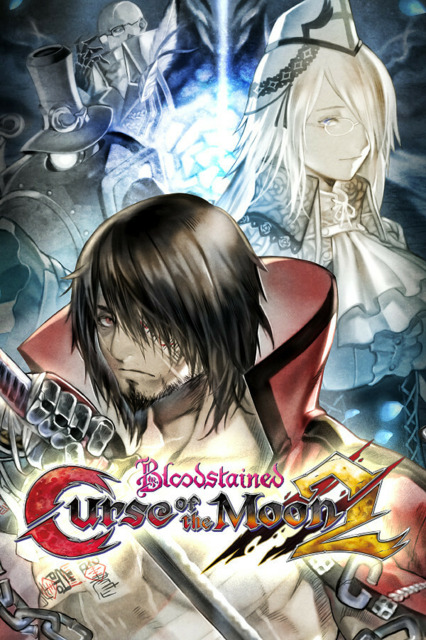Bloodstained: Curse of the Moon 2: We Love Hachi
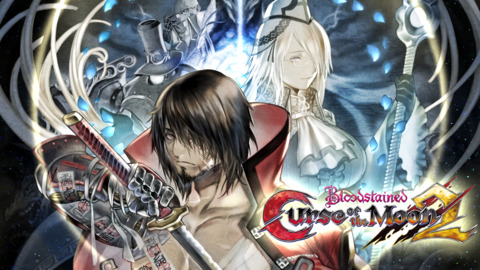
The Castlevania legacy can be split into two schools. There’s the classic formula, action platformers where you fight through linear stages against an onslaught of Halloween monsters. The only things you can rely on are your own ability and whatever sub-weapons you can find. On the other end is the Metroidvania style, where character progression is emphasized, stats supersede skill, and randomly dropping equipment can disintegrate the game’s challenge. Like what you like, but you can probably tell that I prefer the tightness of the classic style. So, while Troidlike revival Bloodstained got plenty of appreciation, I was happy to see it get a classic-flavored spinoff with Bloodstained: Curse of the Moon. That, in turn, received a surprise sequel this year. Curse of the Moon 2 was the first time I dipped my toes into the Bloodstainiverse. Does it stand alongside its progenitors? The game is plenty of fun, but there’s a missing X-factor that keeps it from greatness.
Curse of the Moon 2’s story is about as simple as you’d expect from an 8-bit game. There are demons knockin’ about, and they gotta go. There’s technically more to it than that, but story segments are few and far between. That’s perfectly fine when all you need is an excuse to go through some Video Game Levels. I was impressed with the variety in theming and obstacles. Yes, it’s stuff you’ve seen before, but it doesn’t feel like the developers are checking boxes. The vibes from stage to stage are quite distinct, which is an especially good thing given something I’ll discuss later.
This sub-series has the mechanic of multiple characters ready to jump in at any time. Swordsman Zangetsu is the first you play as, and a carry-over from the first game. He is your jack of all trades, able to cover most areas with his sub-weapons, but his range often comes up short. Dominique, a member of the Church, has a higher jump and more coverage with her spear. She can even do the trendy McDuck pogo bounce, though it’s not a natural fit for a game with static jump arcs. Robert can hit enemies from across the screen with his rifle. Sniping enemies that would give another character trouble is simply satisfying. The tradeoff comes from his reduced health and damage output.
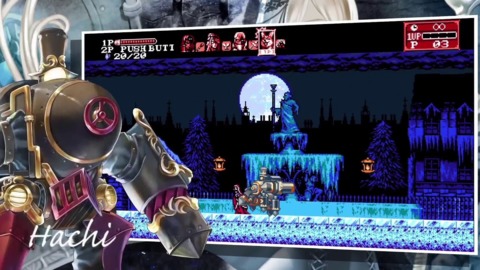
Finally is the MVP of the game, Hachi. I’m not sure if the series lore supports little dogs in huge mech suits, but considering the gigantic demon pets in Ritual of the Night, it seems like a good bet. Hachi packs a mean punch, hovers horizontally, and even has the ability to turn himself invincible as long as sub-weapon ammo remains. This might sound game-breaking – and that’s not entirely untrue – but there are plenty of situations that favor each character. They feel sufficiently balanced while keeping specialties intact. It’s possible to succeed with any one of them (though if you’re stuck with only Robert, your chances look grim).
The number of enemy types is quite large. Each breed of demon has a distinct pattern, putting your skills to the test. They’re all placed in spots where a character with the right tool can take care of them. The appropriate weapon is usually nearby, so it pays to read the room and think ahead. Of course, the preferred character might be dead, which leads to more interesting decision making. I find this type of enemy design very satisfying, and it’s an impression I don’t usually get in Troidlike games. The one exception to this general pattern of goodness is the mech enemies who look like Hachi – they have a ton of health and pincer you, and I didn’t find a good strategy outside of tanking through with the dog himself.
Level exploration is also a component, though obviously not to the extent of a Troidlike. Using character-specific paths can lead to shortcuts through the level. It’s nice as a reward for keeping that character alive and knowing how to use them. There are also upgrades to things like health, defense, and sub-weapon ammo that can be reached by the same methods. They don’t strictly need to be there, but I can’t deny the hit of dopamine that happens when you pick one up. It’s a nice thing to have for those that can’t live without character progression in their games.
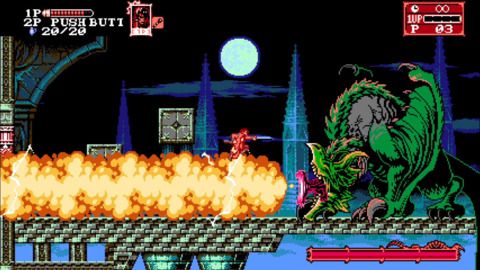
I’m a little more mixed on the boss encounters. These behemoths take up the whole screen, so there’s nowhere they can’t hurt you. The speed of their attacks often feels faster than what the stiff controls will allow for. But for many bosses, it’s not just about avoiding their attacks. They like to flood the screen with goons and projectiles that can really get under your skin. If you dedicate time to getting rid of them, you aren’t hurting the boss, who’s still pumping them out with abandon. You could spend the time learning the patterns and getting in chip damage, but why wouldn’t you just punch the boss in the face with an invincible Hachi? It might not be the most fun solution, but it will be the preferred one by most players, which I see as a flaw. More questionable is when one of your characters dies in a boss fight. Helpfully, the boss will retain some damage next time. But you are at much more of a disadvantage with a smaller pool of characters, especially if you lost Hachi.
Beating every level once is fun enough, but at least two more playthroughs are required to see the true ending. My first run was on Veteran difficulty, which most closely resembles the original Castlevania games. Subsequent runs shifted down to Casual, allowing for several concessions like no knock back and infinite lives. It may not be the Real Gamer thing to do, but I felt that I had proven myself enough, and I wanted to get to the new content as fast as possible. These levels aren’t short by any means. Replaying the whole thing just to try the boss again just isn’t my kind of fun.
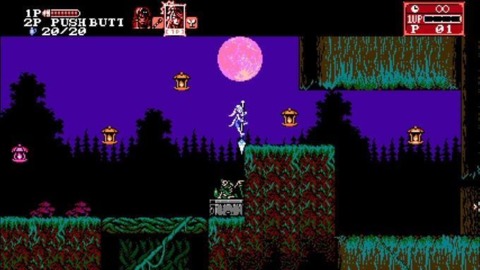
In truth, there are more differences in the later episodes than some give credit for. Episode 2 is a quasi-new game plus. Characters who were introduced in later levels unlock new paths in older ones, making for a mostly new experience. Of course, halfway through the playthrough, you catch up to where you were in the first run, making the back half repetitive. In the playthrough after that, though, you can pick the levels in any order, Mega Man-style. This and another element added during this episode make it a fresh, more open experience. The extra final stage is appropriately a combination of everything that came before, and the game ends on a high note.
Despite only minor annoyances with Curse of the Moon 2, I came away from it not totally fulfilled. Was it the arguable padding of revisiting levels multiple times? The lack of a thrill from easy mode? The want of a Hachi solo game? I still haven’t put my finger on it, but here’s what I came up with. By evoking the most famous games in its genre, the Bloodstained series inherently invites comparisons. There’s nothing Curse of the Moon 2 does egregiously wrong, but it lacks a really compelling hook to put it on the level of those classics. Switching characters is a great idea, but it’s not enough to make the game a must-play. This is especially true considering the volume of action platformers on the market, including the very games which inspired this one.
But that shouldn’t stop you from playing Curse of the Moon 2. Even with just the initial playthrough, it’s exciting and rewarding. The main cast is fun to play as. It’s accommodating to players of all skill levels, and there are extra goodies like a boss rush mode to unlock. Plus, it’s appropriately priced. Curse of the Moon 2 most likely won’t change your life, but it will give you a good time. For those who love this kind of game, that’s all the justification it needs.
